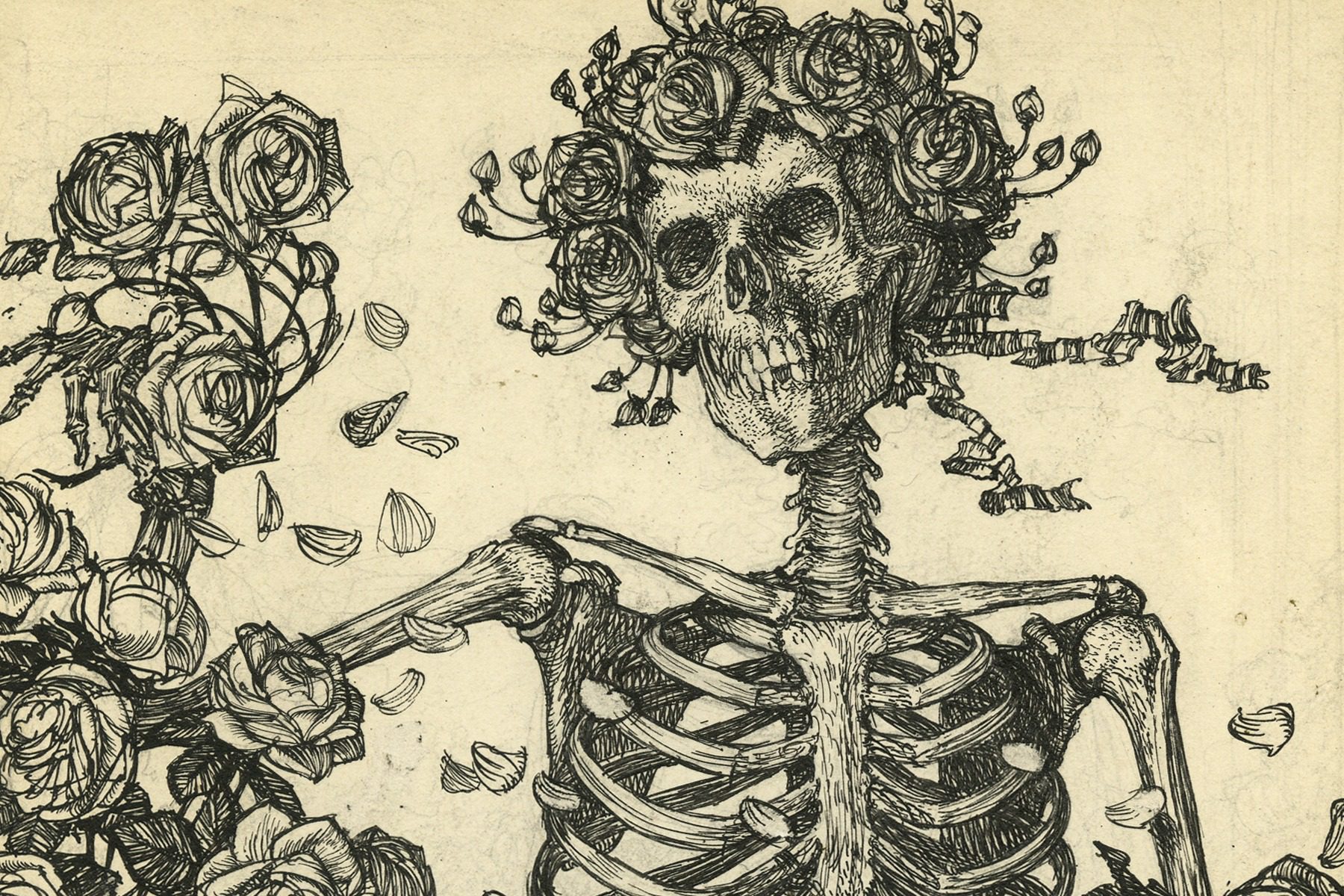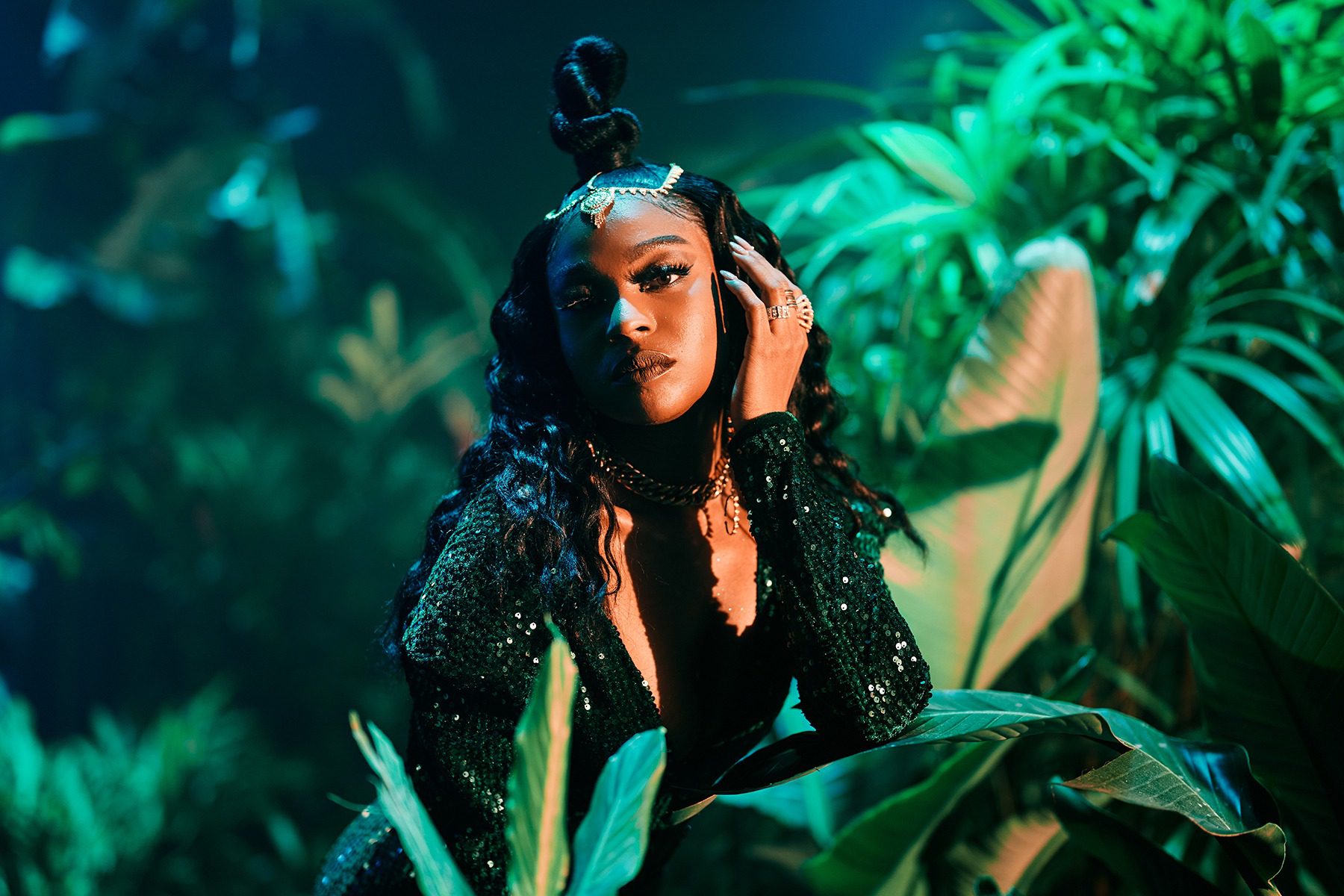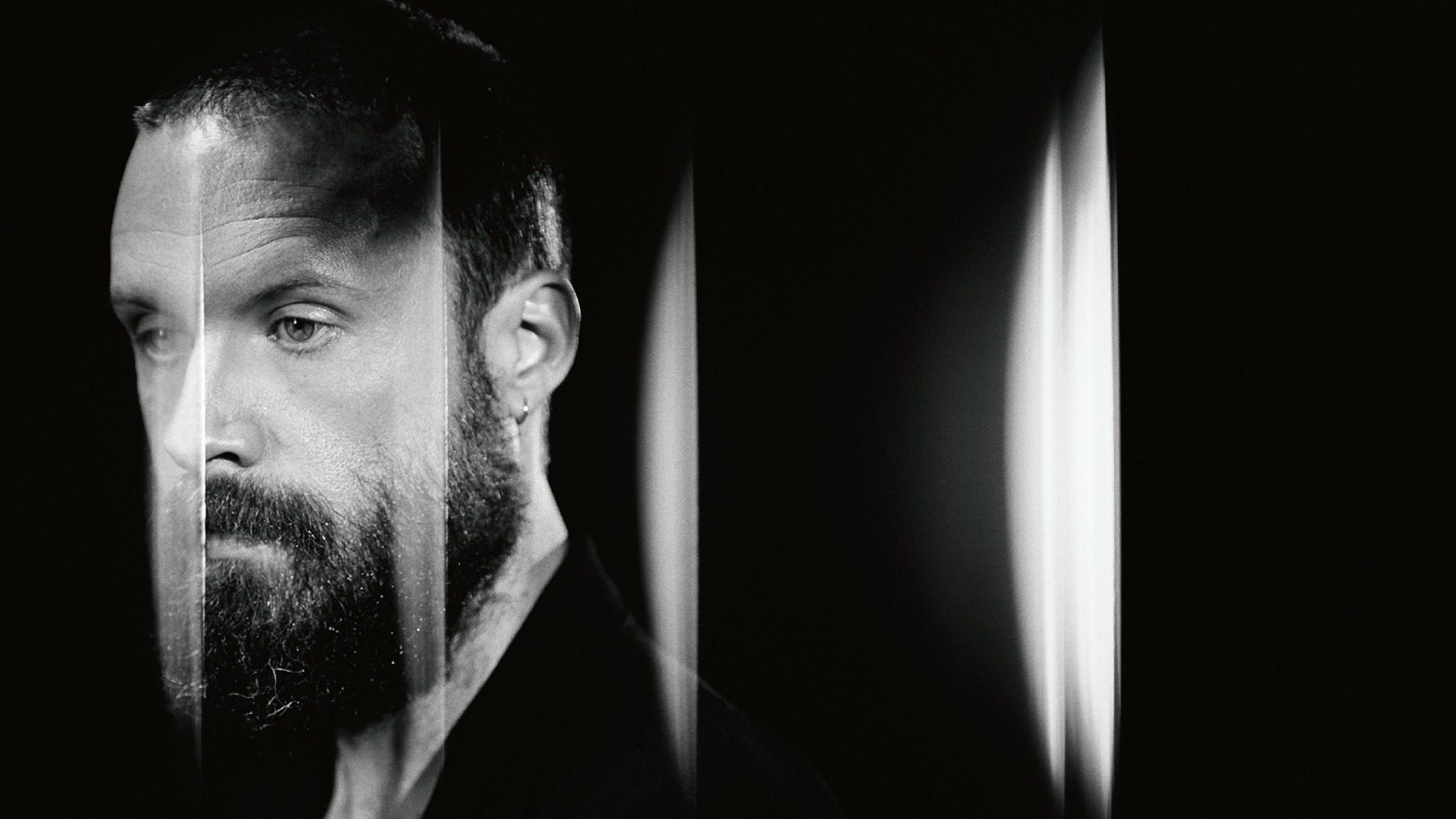
See the Original Art That Inspired the Grateful Dead’s Classic Logo
Anyone perusing a new psychedelic-era artwork exhibit in New York is bound to pause along the way and think, “Wait, isn’t that a Grateful Dead album cover?”
And they would be partly correct. About 30 years ago, artist, curator and art collector Jacaeber Kastor was checking out a gallery auction and came across the nearly century-old ink drawing that served as the basis of the Dead’s logo and album art. He snapped it up, and now that piece (titled “A Skeleton Amid Roses”) can be seen publicly, for the first time in more than three decades, in “Field Trip: Psychedelic Solution, 1986-1995,” part of the Outsider Art Fair at the Metropolitan House in New York.
Untangling the saga of that illustration is nearly as long and strange a trip as the Dead’s saga itself. By 1966, artists Stanley Mouse and Alton Kelley, two San Francisco-based artists, had formed a partnership and were already tapped into the Dead world. For inspiration, the two would sometimes drop into the San Francisco Public Library to peruse rare art and poster books.
blogherads.adq.push(function () {
blogherads
.defineSlot( ‘medrec’, ‘gpt-dsk-tab-article-inbody1-uid0’ )
.setTargeting( ‘pos’, [“mid-article”,”mid”,”in-article1″,”mid-article1″] )
.setSubAdUnitPath(“music//article//inbody1”)
.addSize([[300,250],[620,350],[2,2],[3,3],[2,4],[4,2],[640,250]])
;
});
That year, the duo was recruited to make a poster for the Dead’s September 1966 show at the Avalon Ballroom. Back to the library they went, and in the stacks, they found The Rubaiyat of Omar Khayyam, a collection of 11th century poems by the Persian writer. This particular edition, from 1913, featured illustrations by British artist Edmund Joseph (sometimes E.J.) Sullivan, and one in particular spoke to them: a black-and-white drawing of a skeleton surrounded by roses, with a crown of them atop its head. “We saw that skeleton and said, ‘This says Grateful Dead all over it — we have to use this,’” Mouse recalls. Given how old the illo was by then, Mouse adds, “It seemed pretty copyright-free.”
The problem, as Mouse admits, is that the book was so valuable that it couldn’t be checked out of the library. So Kelley cut it out of the tome with a pen knife, sneaked the page out of the library and brought it to the studio they were using. Using a pre-Xerox Photostat machine, they made a copy of the drawing, and Mouse colored it in and added the now-iconic lettering. (Part of the accompanying poem, which was not used in the poster, read, “One thing is certain, that life flies; one thing is certain, and the rest is lies.”)
After it was used in the poster for the show, the Dead cropped it to the skull for the cover of their 1971 live album Grateful Dead (also known as “Skull and Roses,” or sometimes by the name the band preferred, “Skullfuck”). The image also became the band’s logo, used on stationery and business cards.
Around 1993, Kastor, who owned the legendary Greenwich Village art gallery Psychedelic Solutions, popped into a preview of an auction at Christie’s in New York, with an eye toward buying a rare Velvet Underground piece of art. In an adjoining room, he spied another auction preview gearing up, this one of artwork from the Victorian era.
And there was Sullivan’s original 9.5″ x 7″ ink drawing that had been reproduced in that book.
Kastor, who is from the Bay Area and first saw the Dead play live in 1967, instantly recognized it. “I was looking at all these drawings and I stopped dead in my tracks,” he says. “And I said, ‘Wait a second? What the fuck? That’s the skeleton and roses! This thing is for fucking sale?’” Looking even more closely, Kastor saw that the artwork includes some of Sullivan’s original ideas erased and moved.
blogherads.adq.push(function () {
blogherads
.defineSlot( ‘medrec’, ‘gpt-dsk-tab-article-inbody2-uid1’ )
.setTargeting( ‘pos’, [“mid-article2″,”mid”,”in-article2″,”mid-article”] )
.setSubAdUnitPath(“music//article//inbody2”)
.addSize([[300,250],[300,251],[620,350],[2,4],[4,2],[3,3],[2,2]])
.setLazyLoadMultiplier(2)
;
});
Then owned by a British collector, the original drawing was indeed up for grabs, and at the subsequent auction, Kastor put in an initial bid of $10,000. To his surprise, hardly anyone bid against him, and he was able to walk away with it for $11,000. “These people were stone-cold Victorian illustration guys,” he says. “Nobody there understood the reference.”
Field Trip also features work by H.R. Giger, Robert Crumb, Rick Griffin, Victor Moscoso, Gary Panter, and Robert Williams, among others, along with what Kastor calls a ”trippy” 1967 watercolor by Joni Mitchell. But the Sullivan drawing stands out in many ways. “It has a red velvet mat and is very done up,” says the exhibit’s curator, artist Fred Tomaselli. “It’s really pimped out.”
Mouse, now 81 and still working, chuckles when recalling the origins of the Dead’s skeleton and roses: “I’m most famous for something I didn’t do.” (Kelley died in 2008.) He’s slightly embarrassed by the illicit theft of the work but is at peace with it now. “A few years ago, at a talk at the library, I fessed up to it,” he says. “They laughed it off. I imagine Sullivan is chuckling in his grave.”

Edmund J. Sullivan (1869 – 1933) Skeleton Amid Roses, 1900 Ink on board, 9.5 x 7.25 inches Collection of Jacaeber Kastor
Edmund J. Sullivan/Courtesy of the Collection of Jacaeber Kastor




